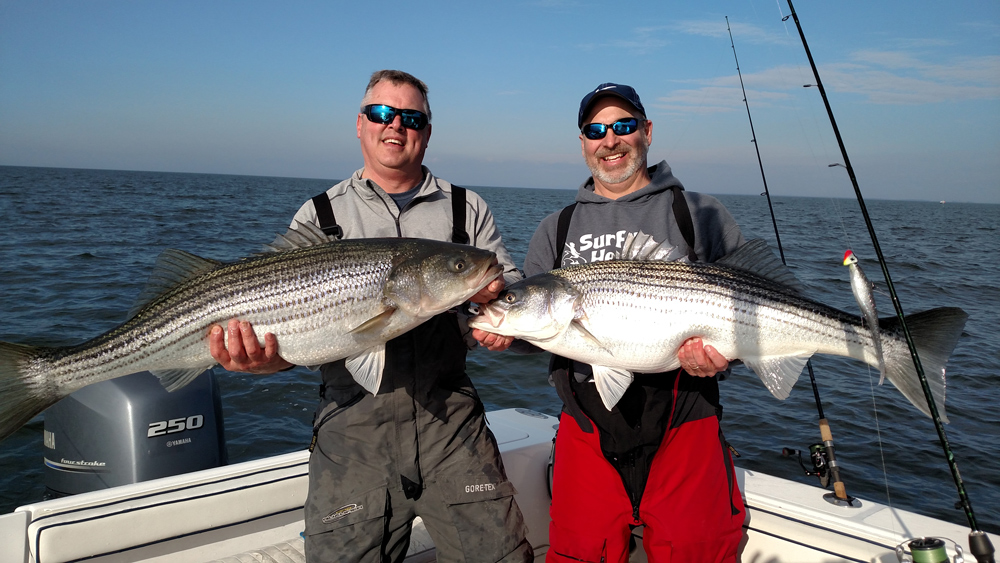We hope you're keeping a close eye on the Coastal Mid-Atlantic Fishing Reports, because the holiday season is often the time of year when we get a shot at mass schools of cow stripers running down the coast. Many times they’re in Federal waters (outside the three mile limit, which is closed to striped bass fishing), but often they come close enough to shore to target. And when they do, the action can be utterly outrageous – here’s how to take full advantage of an oceanic striper run.

- Make sure you carry a good pair of binoculars, preferably a model with gyroscopic stabilization, because the most effective way to find these schools is by looking for birds. Many anglers will simply cruise north or south along the coast, stopping every mile or so to glass the ocean and look for flocks.
- When the fish aren’t up top, trolling with tandems, Manns Stretch 25+ plugs, and Mojo lures will often expose their presence. So if you cruise eight or 10 miles up the coast without seeing any fish, trolling back down for a couple of hours may be the smart move. If nothing strikes nor is sighted, it’s time to repeat the process heading farther down the beach.
- Come armed with standard striper casting gear, but bring an up-sized assortment. Jig heads of an ounce to two ounces are in order, and eight- to 10-inch tails (like BKD lures) are often as or more effective then smaller offerings. Also be sure to carry topwater plugs – the biggest you own – which sometimes trigger obscenely violent strikes from these large, hungry fish.
- Focus on shoals. These underwater humps and rises often gather bait, which then attracts the fish.
- Be sure to carry some wire leaders, and have a rig ready to cast for the chopper blues that sometimes show up mixed with the stripers. Especially early on, there’s a good chance of encountering these toothy beasts and they usually bite right through mono leaders.